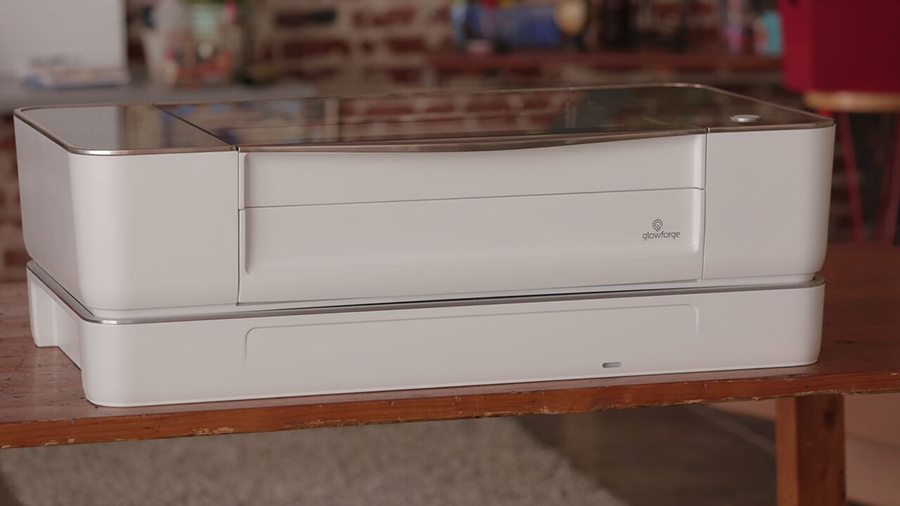Glowforge 3D laser printer turns your desk into a factory
3D printing but not as we know it

For some years now, 3D printing has threatened to usher in a manufacturing revolution where we're all printing our knick-knacks and replacement parts rather than ordering them from Amazon.
That hasn't quite happened yet but Glowforge wants to help inventors and creatives make their own products at home: it's an innovative 3D laser cutter that costs much less than existing laser machinery does.
To be clear, this cuts and etches rather than adding layers like a traditional 3D printer does. You put in your material - wood, acrylic, cardboard and so on - and the Glowforge cuts out your shapes.
Cutting and etching
You can do anything from etch a design into the lid of your Macbook Pro to make a wooden candle holder to sell on Etsy. It's been designed to be easy to operate via mobile apps and desktop software too, so you don't necessarily need any technical know-how to be able to use it.
It's not tiny but the Glowforge is much smaller and much cheaper than comparable kit that would do the same job on a factory floor. By using smartphone components and offloading a lot of the computing to the cloud, its makers have been able to keep costs down.
For the next month you can preorder the basic Glowforge for US$1,995 (roughly £1,310/AUS$2,850), which is 50 percent off. A Pro model with a more powerful laser is available too for twice the price.
Get daily insight, inspiration and deals in your inbox
Sign up for breaking news, reviews, opinion, top tech deals, and more.

Dave is a freelance tech journalist who has been writing about gadgets, apps and the web for more than two decades. Based out of Stockport, England, on TechRadar you'll find him covering news, features and reviews, particularly for phones, tablets and wearables. Working to ensure our breaking news coverage is the best in the business over weekends, David also has bylines at Gizmodo, T3, PopSci and a few other places besides, as well as being many years editing the likes of PC Explorer and The Hardware Handbook.